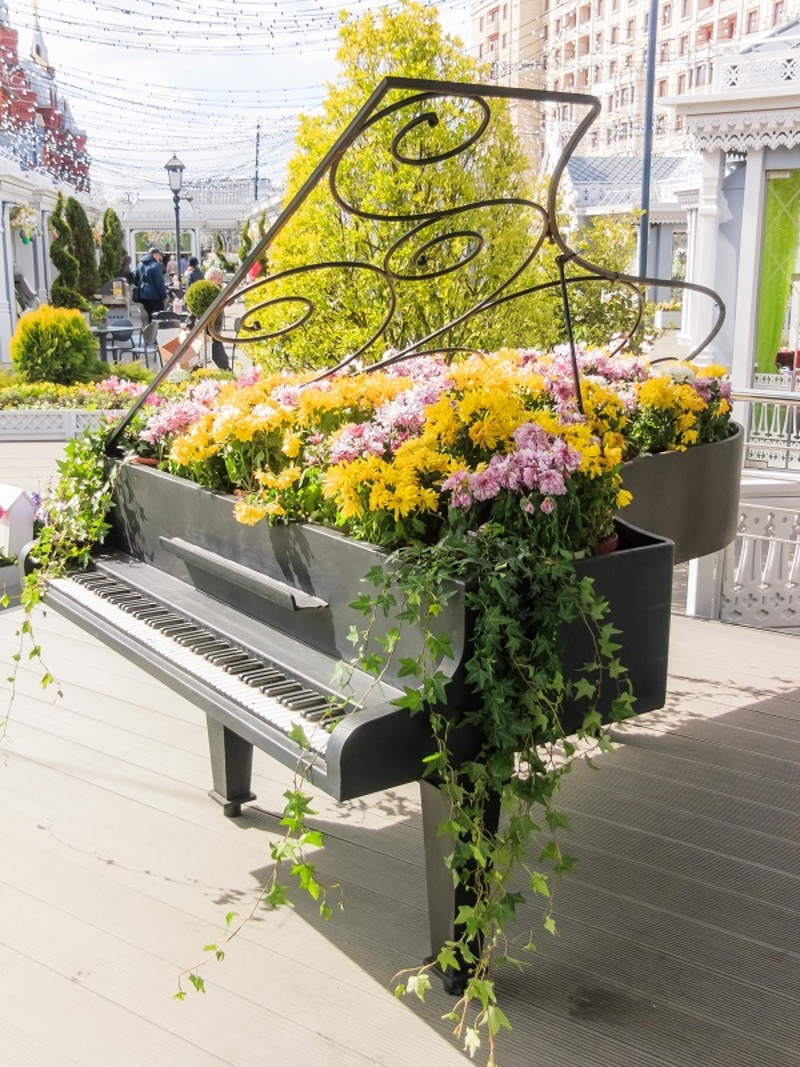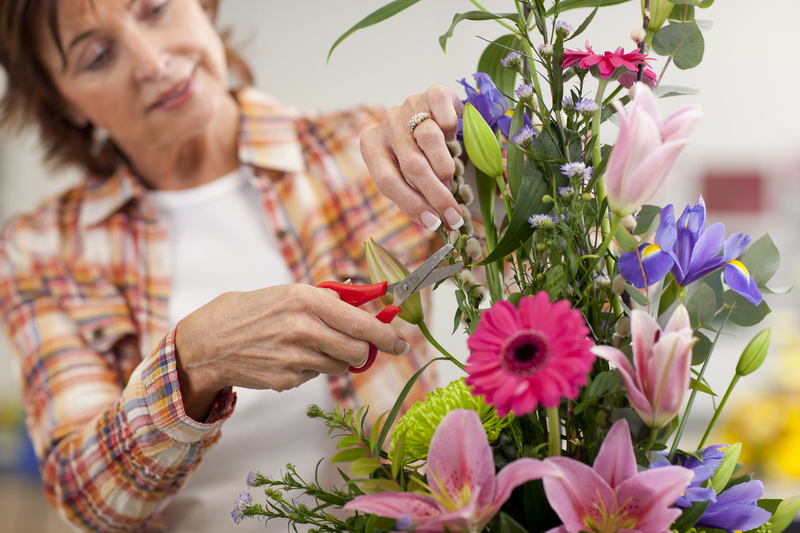Poinsettia Care: Tips for Longevity
Posted on 14/08/2025
Poinsettia Care: Tips for Longevity
The poinsettia (Euphorbia pulcherrima) is renowned for its vibrant red, pink, and white bracts, making it the iconic plant of the holiday season. Yet, many people find their poinsettia wilts or perishes shortly after the festive period. The truth is, with the right poinsettia care, your plant can survive well beyond Christmas, providing beauty and cheer for months, even reblooming for next year. In this comprehensive guide, we provide expert tips for poinsettia longevity, ensuring you enjoy a thriving, healthy plant year-round.
Understanding the Poinsettia: Origins and Characteristics
Poinsettias are native to Mexico, thriving in warm climates under filtered sunlight. They were introduced to the United States in the 1820s by Joel Poinsett, the first US ambassador to Mexico, hence the name. The brightly colored leaves, known as bracts, are often mistaken for flowers. The actual flowers are the tiny yellow buds nestled in the center.
Understanding your poinsettia's natural habitat helps you simulate similar growing conditions for long-lasting poinsettia care.

Poinsettia Placement: Choosing the Right Spot
A thriving poinsettia begins with the right location. Select a spot in your home with bright, indirect light. Too much direct sunlight can scorch the leaves, while too little will cause them to drop.
- Light: Place your poinsettia near a sunny window where it receives at least 6 hours of indirect light each day.
- Temperature: Maintain a consistent room temperature between 65-75?F (18-24?C). Sudden temperature fluctuations stress the plant.
- Avoid Drafts: Do not place your poinsettia near heaters, radiators, or cold drafts from doors and windows.
- Humidity: Poinsettias prefer moderate humidity. Dry air from heating can cause leaves to brown.
Tip: If you live in a dry climate, consider placing a tray of water near your plant to increase local humidity.
Watering Your Poinsettia for Longevity
Proper watering is crucial for poinsettia health. Overwatering is the most common reason these plants fail after the holidays. Here are the best practices:
- Check Soil Moisture: Stick your finger about an inch into the soil. Water only if it feels dry to the touch.
- Watering Amount: Water the plant thoroughly until it drains out from the bottom, but never let the plant sit in standing water--empty saucers promptly!
- Avoid Overwatering: If the leaves start turning yellow or dropping, you may be watering too much.
- Use Room Temperature Water: Avoid cold or hot water, which can shock the roots.
Remember: Poinsettias are sensitive to root rot, so err on the side of underwatering rather than overwatering.
Feeding and Fertilizing Poinsettias for Lasting Beauty
While poinsettias purchased during the holidays generally don't need immediate fertilization, regular feeding promotes lush foliage and robust growth beyond Christmas.
- When to Start: Begin fertilizing once you see new growth, typically from late winter onwards.
- Type of Fertilizer: Use a balanced, all-purpose houseplant fertilizer diluted to half strength every 3-4 weeks.
- Cease Feeding: Stop fertilizing in late fall when the plant becomes dormant in preparation for blooming.
Note: Over-fertilization can lead to leaf burn and poor bract formation, so always follow label instructions.
Handling Leaf Drop and Common Issues
Leaf drop is a common problem with poinsettias, often related to abrupt changes in environment or improper care. Let's explore how to handle common issues:
1. Leaf Drop
- Sudden Move: Pointsettias dislike rapid temperature or light changes--transition them slowly into new spaces.
- Watering Stress: Inconsistent watering or soggy soil can cause leaf drop.
- Pest Infestation: Inspect for pests like whiteflies or spider mites, which can also cause leaves to fall off.
2. Leaf Curl and Browning
- Too Much Sun: Direct sunlight can scorch sensitive bracts.
- Dry Air: Low humidity around heaters can cause brown, curled leaves.
3. Fading or Loss of Color
- Insufficient Light: Ensure your plant receives enough bright, indirect sunlight daily.
- Nutrient Deficiency: Begin a feeding regimen when you see new growth in the spring.
Pruning, Repotting, and Maintaining Your Poinsettia's Shape
After the holiday season and once your plant begins to fade, don't despair. With some care, you can encourage new growth and even reblooming for next year.
Pruning Techniques
- When to Prune: In early spring (March or April), prune back stems to about 4-6 inches tall. This will promote bushier growth.
- How to Prune: Use clean, sharp scissors or pruning shears. Remove faded bracts and any weak stems.
- Pinching: Throughout the summer, pinch back new stems every month to encourage a fuller, denser plant.
Repotting Your Poinsettia
- When to Repot: If your poinsettia has outgrown its container, repot in spring after pruning.
- Soil Type: Use a well-draining, peat-based potting mix. Ensure the new pot has ample drainage holes.
Pro Tip: Be gentle when repotting, as poinsettia roots are delicate.
Poinsettia Reblooming: Encouraging Color for Next Christmas
Love the challenge? Next year, your poinsettia can burst into colorful bracts again if you follow a reblooming schedule.
Photoperiod: The Key to Reblooming
Poinsettias are short-day plants, meaning they require long nights and short days to set bracts. In nature, this cycle starts in autumn.
- Start in the Fall: Beginning in late September or early October, ensure your poinsettia has 14-16 hours of total darkness each night for about 8-10 weeks.
- How to Provide Darkness: Cover the plant with a cardboard box or place it in a closet from 5:00 PM to 8:00 AM daily.
- Daytime Care: During the day, expose your poinsettia to bright, indirect sunlight for 8-10 hours.
Continue regular watering and limited feeding during this period. Once you see colorful bracts beginning to form (usually late November), you can resume normal care and display your plant for the holidays.
Is the Poinsettia Poisonous? Dispelling Myths
A common concern about poinsettias is their alleged toxicity. While not safe to ingest, especially for pets or children, it is a myth that poinsettias are deadly. The plant's milky sap can cause mild stomach upset if eaten and skin irritation in sensitive individuals.
- Safety Tip: Keep poinsettias out of reach of curious pets and children.
- Handle Carefully: Wear gloves while pruning to avoid skin irritation.
Decorative Ideas and Year-Round Enjoyment
Poinsettias aren't just for Christmas! With excellent poinsettia plant care, these versatile plants can add allure to your home throughout the year.
- Pairing Plants: Mix with ferns, ivy, or other green plants for a striking arrangement.
- Use Different Containers: Bright pots and baskets complement poinsettia colors.
- Outdoor Use: In warm climates, transplant your poinsettia outdoors after the risk of frost has passed. They make beautiful garden accents!
Frequently Asked Questions About Long-Term Poinsettia Care
How long can a poinsettia live?
With proper care, poinsettias can last for several years as attractive houseplants and rebloom annually.
Why are my poinsettia leaves turning yellow?
This is often due to overwatering or poor drainage. Adjust your watering routine and check for root rot.
Can I plant my Christmas poinsettia in the garden?
Yes, if you live in USDA zones 9-11 where winters are mild. Gradually acclimate your plant to outdoor conditions in spring.
How do I get my poinsettia to turn red again?
Follow the photoperiod regimen each autumn, giving your plant long nights and short days to induce bract color change.

Summary: The Secrets to Poinsettia Longevity
- Choose a bright, draft-free spot for your plant.
- Water only when the soil is dry, and never allow the roots to sit in water.
- Begin fertilizing in spring when new growth appears.
- Prune back after the holidays to promote bushiness.
- For reblooming, provide uninterrupted nights from September to November.
- Monitor for pests and leaf issues, addressing problems early.
Conclusion: Enjoying Healthy Poinsettias Year-Round
By following these expert poinsettia care tips for longevity, you can transform your holiday gift into a lasting part of your home decor. With the right light, water, feeding, and a little patience, your poinsettia will thrive and rebloom to grace your home with festive cheer every year. For even more vibrant results, experiment with different varieties and colors, and don't be afraid to make the poinsettia a centerpiece in your home year-round.
Remember: Healthy poinsettias are happy poinsettias!
Latest Posts
The Secret Garden of Peony Symbolism: Colors and their Stories
What Does Your Birth Flower Say About Your Character
Red Roses and Valentine's Day: A Love Affair Explained





